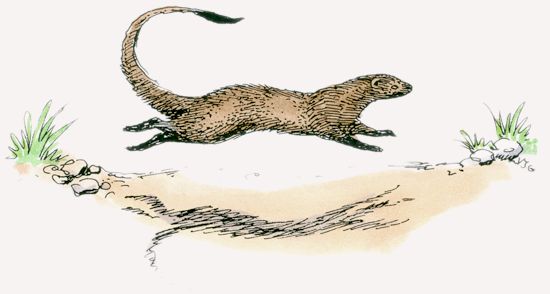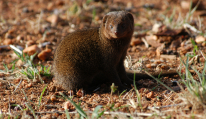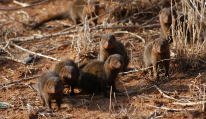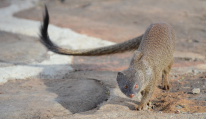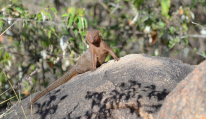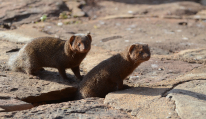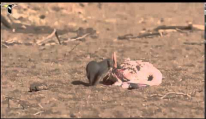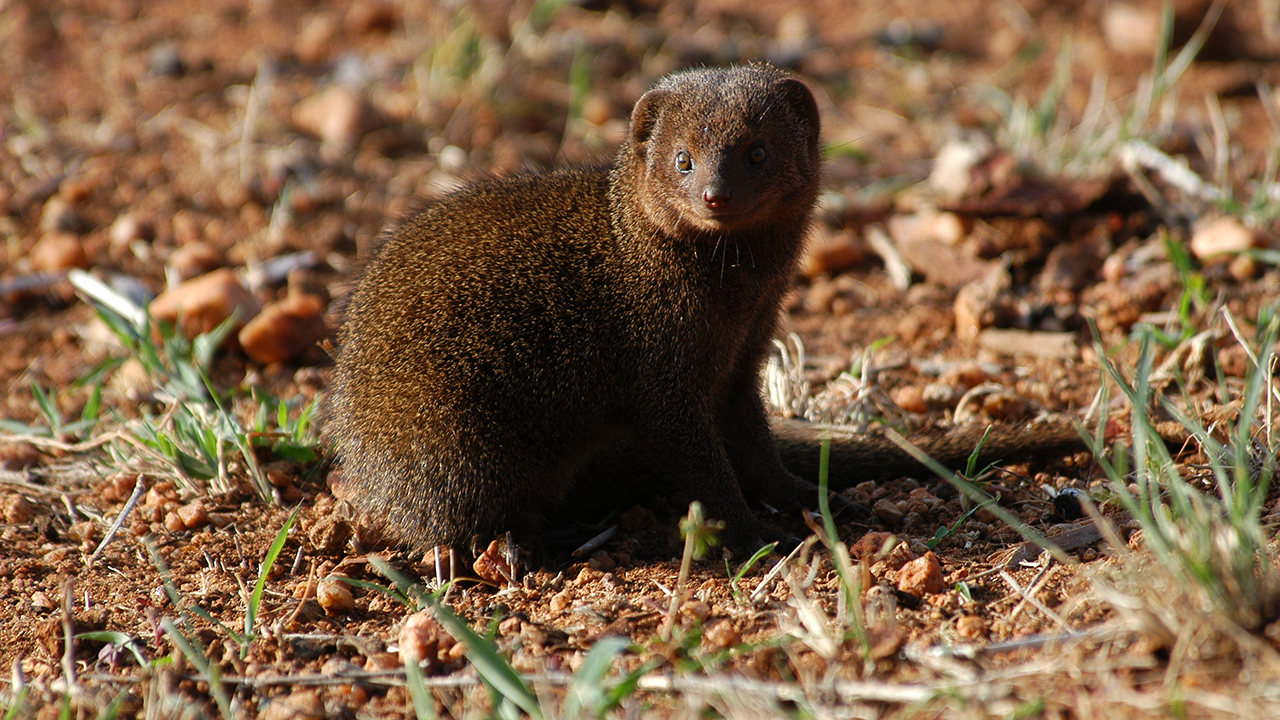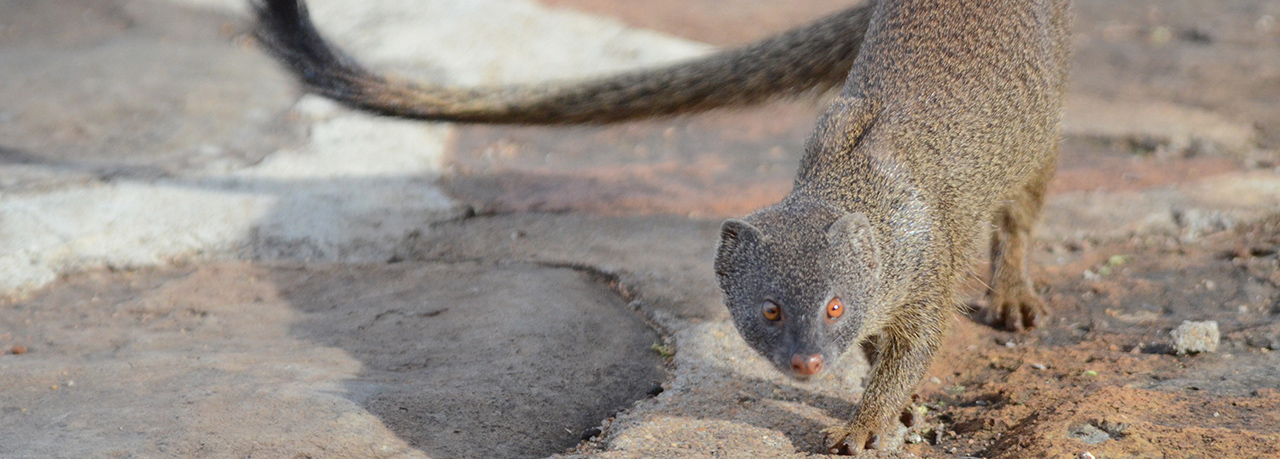Social Structure
Predominantly solitary, slender mongooses come together mainly to breed. Males hold large territories that encompass several female territories. Males may associate peacefully with other males in their home range.
Communication
Slender mongooses communicate through scent-marking and vocally with at least five calls. These include a “spitting” noise, a growl, a snarl, a buzz, and a huh-new call, which signals distress.
Behavior
Though they climb better than most other kinds of mongooses, they spend most of their time on the ground, navigating walls and fences. They take advantage of roads, traveling along them with their noses to the ground and the dark tips of their tails raised. Slender mongooses sleep in dens at night and rest in them during the heat of the day. They usually don’t dig their own shelters, preferring to appropriate aardvark burrows, termite mounds, or the hollows under rock piles or tree roots.
Conservation
Slender mongoose populations are widespread and robust. These animals are used in traditional medicine and for bush meat, even though their meat has a strong, unpleasant odor.

